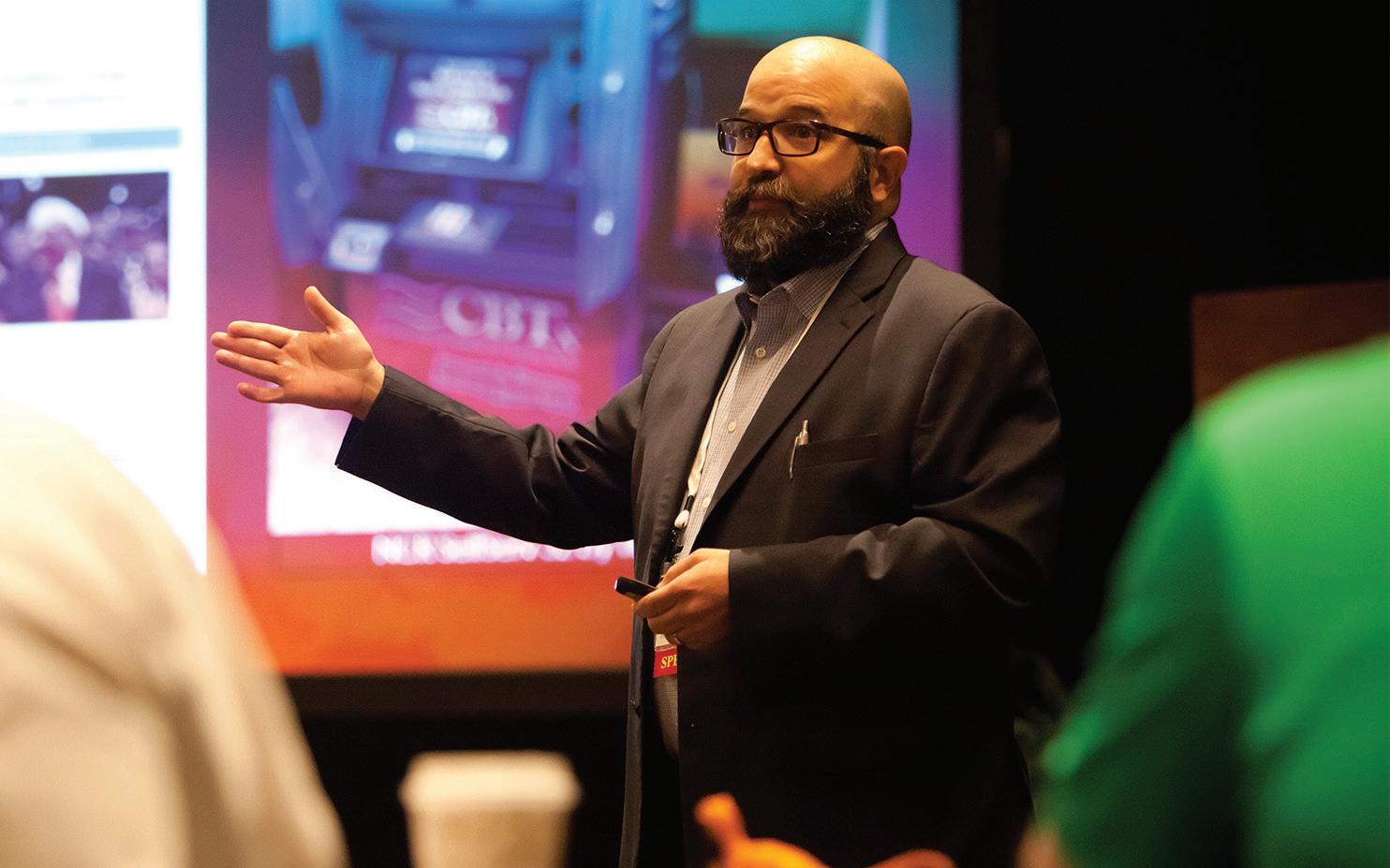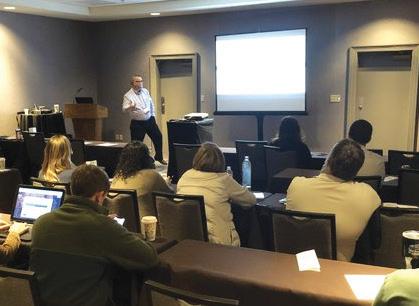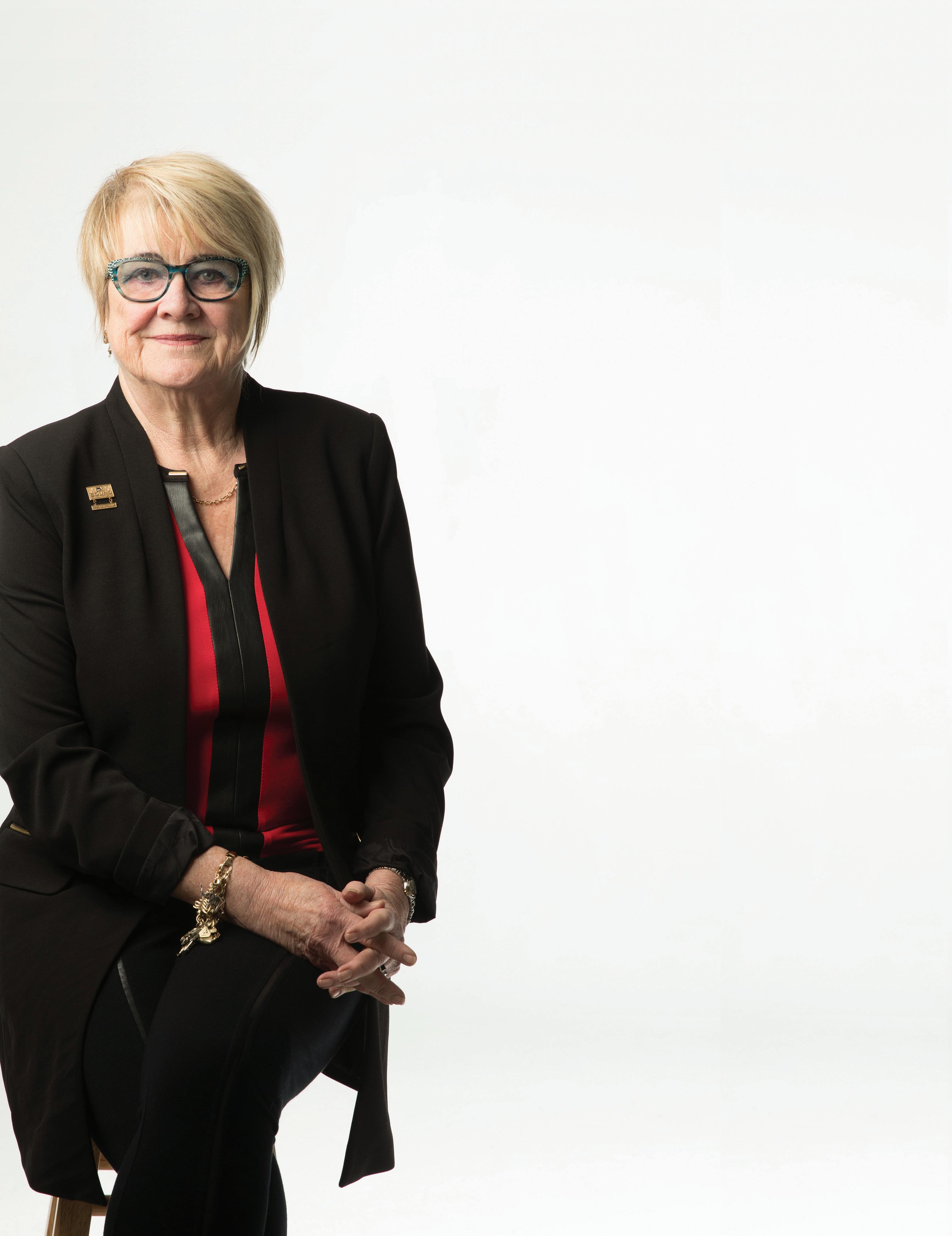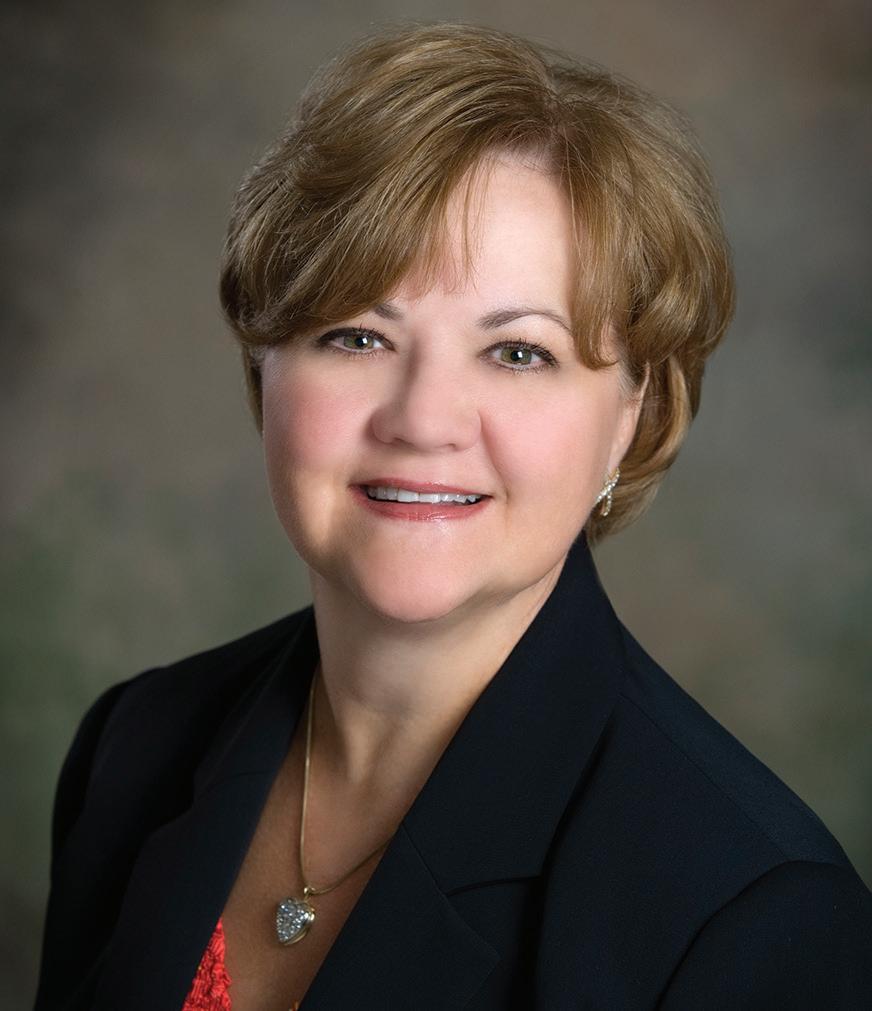
12 minute read
The Arkansas Farm Mediation Act
By Cami Davis Farm Mediation Coordinator Arkansas Department of Agriculture
The Arkansas Farm Mediation Act (Act) impacts the actions lenders can take on a wide variety of agricultural loans that meet certain criteria. Many lenders are not aware of the Act or the Arkansas Farm Mediation Program (Mediation Program), now being administered by the Arkansas Department of Agriculture under the Transformation and Efficiencies Act of 2019.
Agricultural mediation is designed to serve as a confidential and cost-effective way for farmers or producers and their creditors to resolve disputes collaboratively with the guidance of a neutral mediator. Through the Mediation Program, creditors and farmers can avoid the burdensome cost and time required for litigation while achieving mutually beneficial outcomes. The Mediation Program is completely voluntary, confidential, and provided at no cost to participating farmers and creditors. The Mediation Program is governed by Ark. Code Ann. 2-7-101 – 2-7-310. These statutes set forth the requirements that must be met prior to a lender taking action against a qualifying loan that is delinquent, distressed, or subject to a monetary or other default.
A loan qualifies for the Mediation Program if it is a secured debt with a balance of at least $20,000. The farmer must own or lease at least fifty acres of agricultural property or have generated gross sales of farm products totaling at least $20,000 in any of the three preceding years. If these conditions are met, the creditor, prior to initiating legal action against the farmer, is required to send a one-page form called the “Creditor Notice to Farmer of Right to Request Mediation” (often referred to as a “Creditor Notice”) by certified mail to the farmer. This form can be found on the “Services” section of the Arkansas Department of Agriculture’s website.
After a creditor sends a completed Creditor Notice to a farmer, a copy must be sent to the Mediation Program at the address listed at the bottom of the form. The Mediation Program will create a case file and provide the farmer with an information packet. The packet will include a letter informing the farmer that he or she has fourteen days to request mediation by completing the enclosed forms and returning them to the Mediation Program. A release will be issued to the creditor if a request for mediation is not received from the farmer within the 14-day period. 18 The Arkansas Banker n Winter 2019
A creditor will be notified within five days of a farmer’s request for mediation. The Mediation Program staff will arrange for a mediator, venue, and meeting time that works for both the creditor and farmer. All participants will be notified in writing once the mediation is scheduled.
If the farmer has additional qualifying creditors, these creditors will be notified of the mediation and will have a right to attend and participate in the process but will not receive a release at the end of the mediation. Additional qualifying creditors may be added to the mediation if the farmer has multiple agricultural loans that are not in good standing.
Mediations are also relatively quick. The process generally takes an average of forty-two days after receipt of the farmer’s request for mediation. While the parties’ advocates may attend and participate, both creditor(s) and farmer are required to personally attend the mediation and have the authority to negotiate. The initiating creditor will be issued a Release at the end of the mediation regardless of whether an agreement is reached. The release is good for one year from the date of issue.
All mediators on the Mediation Program’s roster are attorneys who are also certified mediators through the Arkansas Alternative Dispute Resolution Commission (ADR) program, a division of the Administrative Offices of the Courts. The ADR have defined qualifications and training that must be completed to become certified, which includes an additional six hours of continuing mediation education each year.
The Arkansas Department of Agriculture proudly administers the Mediation Program as an opportunity to support farmers and creditors. Our goal is to promote stability and good financial health for the agricultural industry along with a positive lending environment in Arkansas without the added time, stress, and expense of litigation. To find out more about the Mediation Program, you can contact: Cami Davis, Farm Mediation Coordinator, Arkansas Department of Agriculture, 501-219- 6384 or cami.davis@agriculture.arkansas.gov. or review information about the program at arkansas.agriculture.gov.
First Community Bank Brings Gardening Expert P. Allen Smith to Independence County

First Community Bank hosted a Taste of Moss Mountain Farm featuring gardening expert P. Allen Smith at UACCB’s Independence Hall to a crowd of more than 500 in October. The event was an effort of the “Bloom with Us” program, a statewide initiative between Smith and First Community Bank to beautify communities while raising awareness of the benefits of pollinator gardens and encouraging others to plan their own.
“The Chairman and CEO of First Community Bank, Dale Cole, is a visionary who is passionate about the health of our region,” said P. Allen Smith. “That is why I am excited to work with First Community Bank. They are making important investments to improve the health of pollinators across the Arkansas and Missouri regions.”
Smith wowed the eager crowd with slides featuring his home and gardens at Moss Mountain just outside Little Rock. He covered a plethora of fall-themed gardening and decorating guidelines, giving advice on which plants he deemed top performers. He created two floral arrangements in pumpkins that he later raffled off much to the delight of the masses. Drawings were held for a pollinator garden kit, a trip to Moss Mountain Farm, several P. Allen Smith cookbooks and recipe cards.
The evening was rounded out with a cooking demonstration with Smith and local restaurant owner Natalie Cox, to share with the crowd recipes and samples for a cranberry pecan rice salad, Smith’s famed Aunt Jamie’s cookies, buttermilk pecan pie tartlets and citrus tea. “As a company, we truly believe in giving back to the communities in which we live, and we were so pleased to have P. Allen Smith visit and share his vast knowledge of gardening, decorating and cooking with our community,” said Dale Cole, CEO, First Community Bank. “I’d also like to note that the wonderful butterfly sculpture seen on stage during the event was done by local sculptor, John Ellis. We will be bringing his sculptures to each of our pollinator gardens and invite everyone out to enjoy them.”
Smith has designed and installed pollinator gardens at over 20 First Community Bank locations throughout Arkansas with one extending into Pineville, MO. To visit a garden near you, please visit www.firstcommunity.net for a location guide and more information about the “Bloom with Us” program.
P. Allen Smith
2019 MEGA Conference



Go big or go home—that’s the Megasaurus motto. And that’s what it was! The two-day 2019 ABA MEGA Conference, combined eight annual conferences into one incredible experience that included professional development, networking, and an on-site trade show that offered one-on-one time with vendors. Event highlights included lunch speaker Rob Nichols, CEO and president of the American Bankers Association, while another day offered a hemp banking panel that discussed information about this new crop frontier. Throughout the two-day event, attendees enjoyed networking with peers from across the state and learning the newest banking trends during the job-specific tracks, whether they needed to know more about agriculture banking, bank management, compliance, lending, marketing, security, technology, and trust. It was all there.
(Top photo) The “Price is Right” gameshow proved to be popular among conference attendees during the trade show reception. (Middle photo) Banker Jason Tennant of Cornerstone Bank, Eureka Springs competes for prizes during the show. (Bottom photo) Almost 200 bankers and vendors gathered for lunch each day at this year’s conference.
(Top photo, opposite page) Speaker Cindy Prince of Compliance Alliance spoke on several subjects such as compliance in advertisements, marijuana banking, and compliance management systems. (Second photo, opposite page) Speaker Tim Leonard of the Commercial Bank of Texas ‘wowed’ attendees with his presentations during the Technology and Security Conferences. (Third photo, opposite page) Hemp banking panelists Dan Martini, American Bankers Association; Daniel Beck, Simmons Bank, and Kevin Hart, Green Check, discuss the economics of hemp production. (Bottom photo, opposite page) Heather Meek of the Sells Agency discussed the shifts in the media consumption and the changes in internetconnected devices among today’s culture. (Inside photo, opposite page) American Bankers Association President and CEO Rob Nichols gives an update from Washington, D.C. to Arkansas bankers.
Proved to be BIG!









(Top left photo) MEGA the megasaurus getting advice from Mainstreet Advisors! (Middle photo on left) Wayne Goode of First Financial Bank educated members on the importance of being prepared in case of an active shooter in the workplace at the MEGA conference. (Bottom left photo) Herbert Thomas with First National Bankers proudly showed off his MEGA t-shirt! (Top right photo) MEGA and Kevin Pulliam discussed security measures at the SBS CyberSecurity booth. (Bottom right photo) MEGA stopped for snacks at the ESQ Realty booth at the conference.


Anatomy of a Bank Acquisition Heading into 2020
By Debra Cope
Bank mergers and acquisitions have been slowing down just a tick amid growing conviction that the economy can’t continue to expand indefinitely. But banks remain active deal-makers, and boards have a pressing need to understand how transactions come together, according to Greyson Tuck, a partner in the law and consulting firm Gerrish Smith Tuck.
“Many independent directors, whether they’ve been through an M&A transaction or not, are not intimately familiar with how a transaction works,” Tuck says.
By far the biggest driver of bank M&A today is the quest for scale, Tuck adds. “Everybody is of the belief that bigger is better and more efficient.”
Another factor is what he calls “the arms race for deposits. If you are deposit-heavy, there is probably somebody that will buy you and pay a nice premium.” Finally, banks with young but experienced CEOs and management teams are attracting a lot of attention from others that are hungry for talent and succession plans.
American Banker recently reported that although the pace of M&A has been slower in 2019 than prior years, more than 180 mergers were announced through the end of September.
Additionally, a survey of 571 bankers by the Conference of State Bank Supervisors conducted between April and July pointed to an eventual acceleration in merger activity. Almost a quarter of banks said they had made an acquisition bid to another bank in the past year, up from 20 percent in last year’s survey. More than 14 percent of banks said they had received an acquisition offer in the past year, up from 13 percent in 2018 and 11 percent in 2017.
Tuck identifies four areas where boards may wish to focus their energies when presented with an acquisition.
Understand financial assumptions and their limitations. It is relatively easy to paint a glowing picture of how a merged entity would perform. Directors should push for clear explanations of the assumptions and keep in mind the data processing adage, “garbage in, garbage out.” Projections are limited value if they don’t reflect reality. Tease apart the social and financial issues. “It’s easier to recover from a financial misstep in an acquisition than to deal with a clash of cultures,” Tuck says. “If the cultures don’t mesh, it hardly matters what the financial metrics are, because we probably haven’t made a good deal.” Social issues can include matters of autonomy, such as whether employees can easily take time during the day to attend a child’s school performance or whether they need to schedule the absence two weeks in advance. Social issues can also include the credit culture, such as the degree of flexibility a loan officer has to accommodate a customer’s specific needs.
Keep front-line employees engaged. “Banking is a relationship-driven business, particularly in a community bank,” Tuck says. When customer-facing employees on both sides buy into the deal, their enthusiasm can be influential. But if a deal is announced and no work has gone into bringing tellers and other front-line employees on board, there is a potential that customers will hear a message of disappointment.
Evaluate the deal against the goal. The ultimate responsibility of an acquirer is to engage in a transaction that enhances shareholder value for the owners, Tuck notes. Does the deal increase earnings per share? Support the stock’s liquidity? Provide new talent? Expand the bank’s geographical area? A deal may not meet all these criteria, but it should meet some of them. “The acquirer needs to be very strategic and specific in identifying the reasons for the transaction,” Tuck says.
One of the key questions for directors to ask is: Who is getting what in this deal? The board of the acquiring bank should have a clear picture of what benefits the institution stands to realize, Tuck explains. Are there nonfinancial benefits as well as financial ones? Is the case clear that the bank should spend the time and effort to pursue the deal?
“Directors of the acquiring bank shouldn’t micro-manage the deal,” Tuck says. “But they should be very cognizant of the financial and social issues that arise in an acquisition and be prepared to offer sound advice to management.”
This article originally appeared in the November/December 2019 issue of ABA Banking Journal Directors Briefing.










